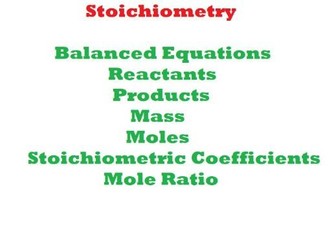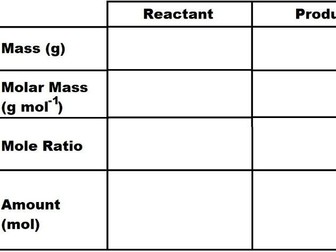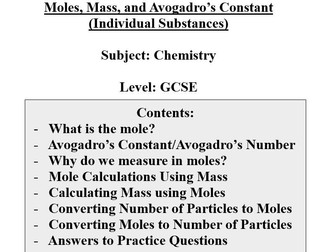
Stoichiometry 1: Moles and Masses
A resource that can be used as a guide during a lesson or as a revision pack and is the first in a series of resources on stoichiometry. This resource focuses on calculating the masses and amounts of reactants and products of chemical reactions.
The calculations contain step-by-step instructions including the processes of balancing equations using stoichiometric coefficients; the use of mole ratios to determine amounts in moles and the use of formulae to determine masses via methods involving conversion factors and without.
This resource is aimed at AS level or equivalent chemistry students to introduce the topic of stoichiometry. This will act as a foundation before moving on to other aspects such as limiting and excess reactants in future resources.


